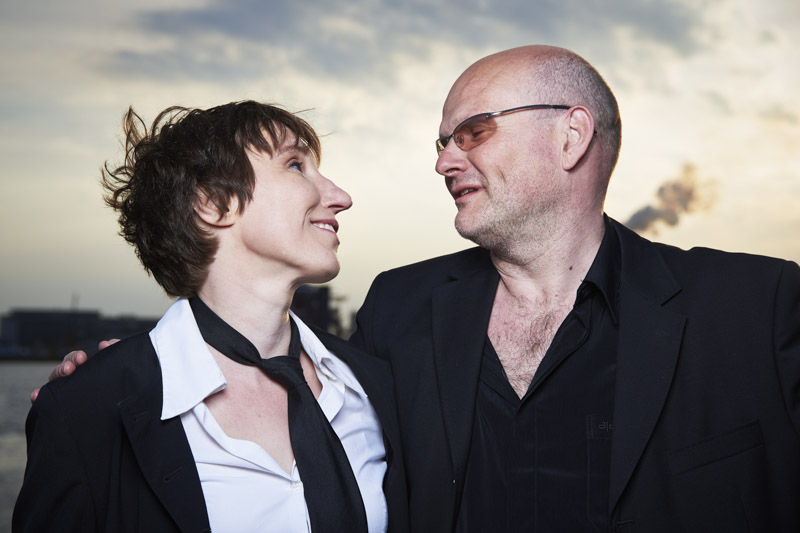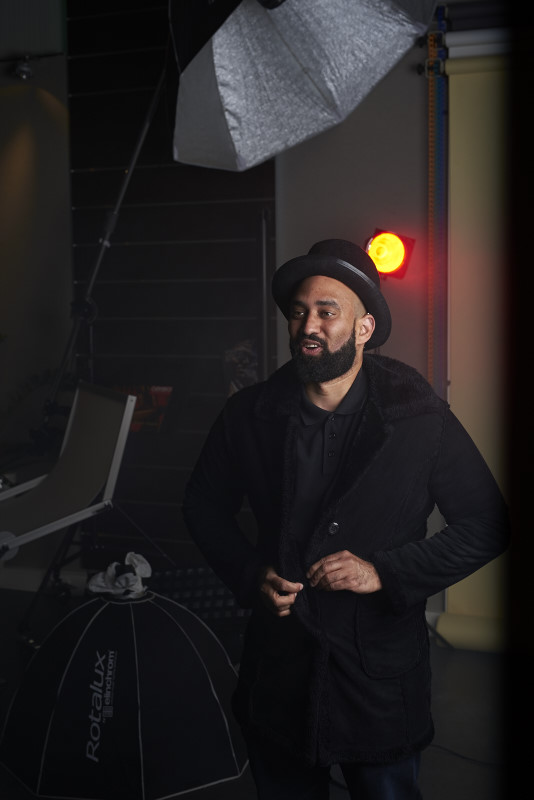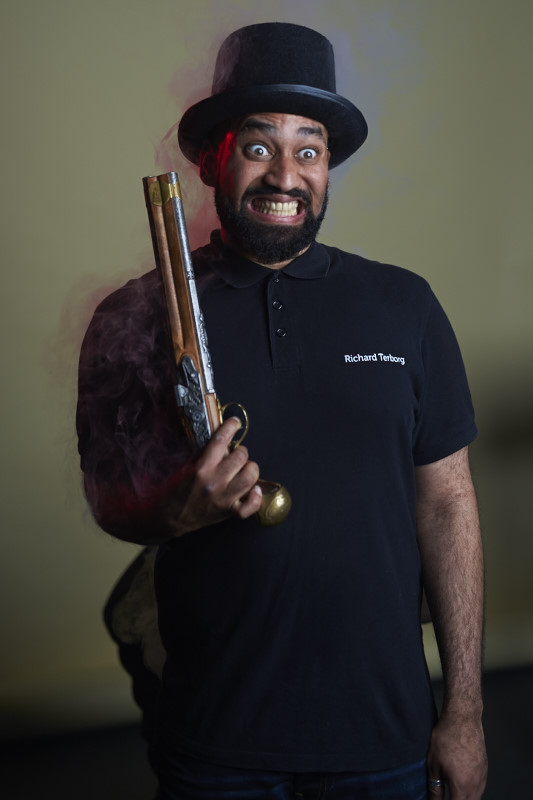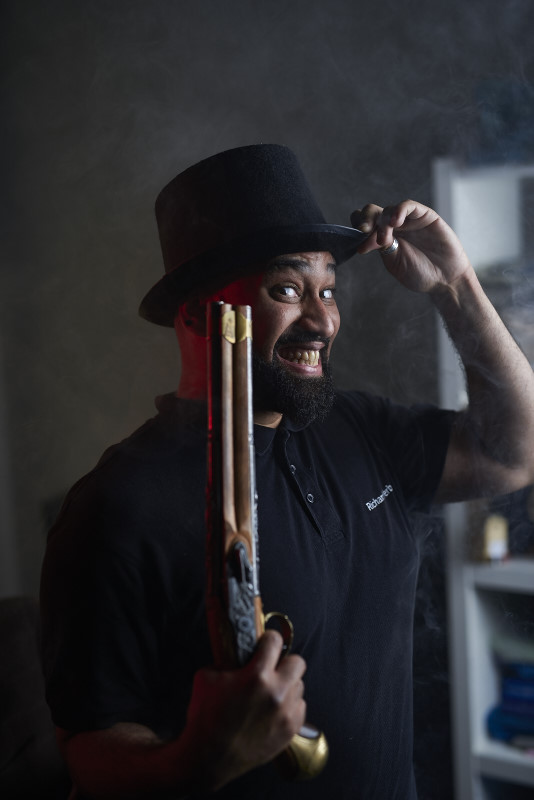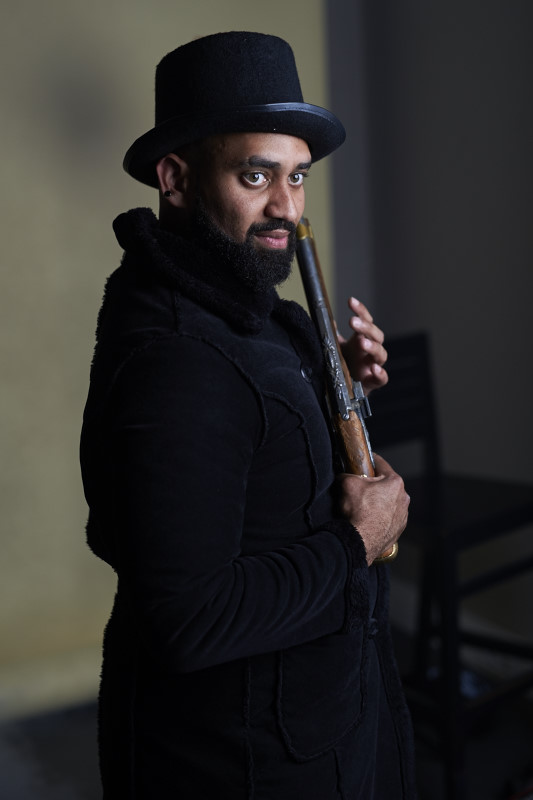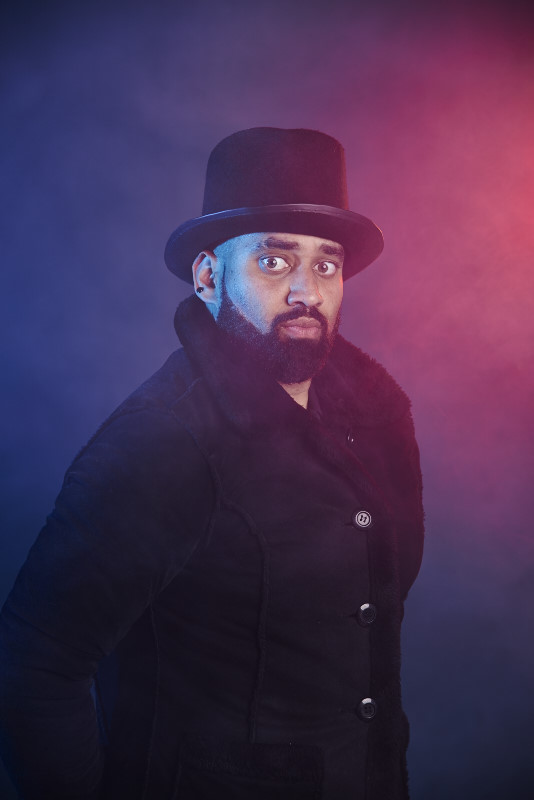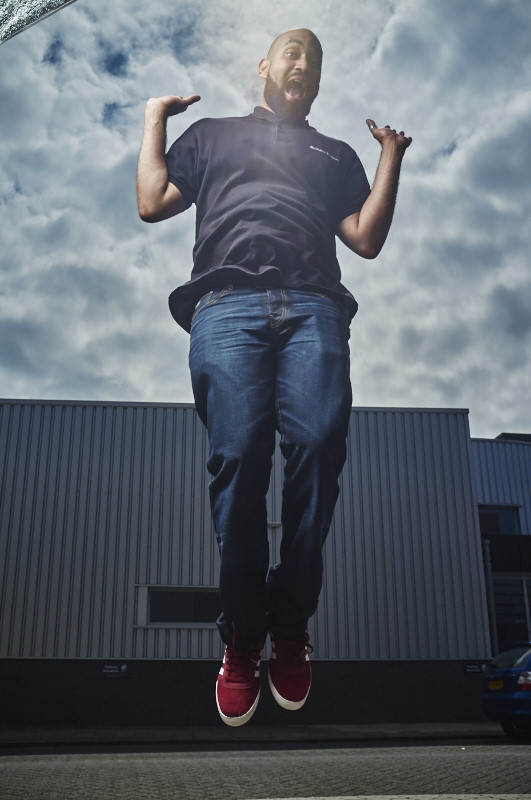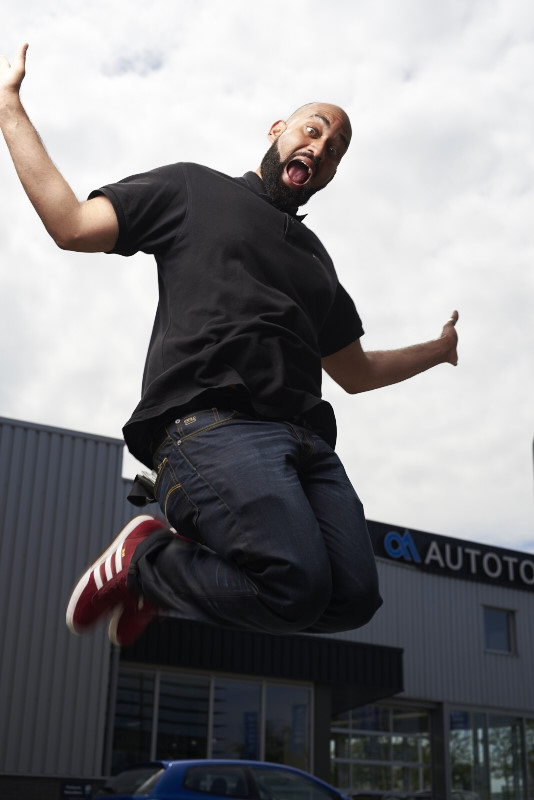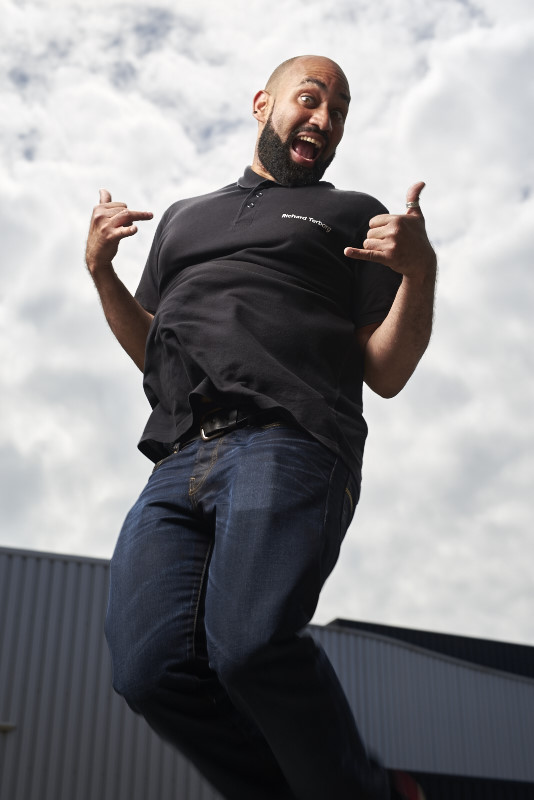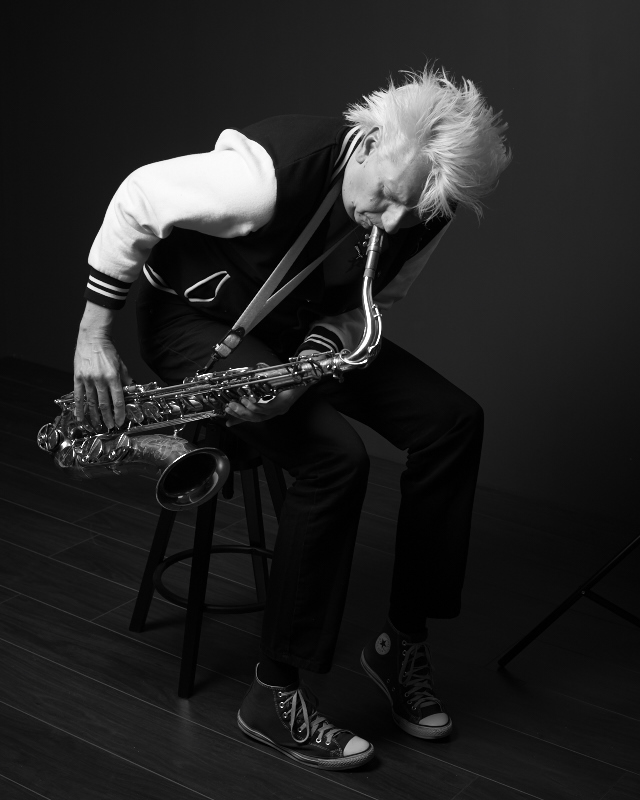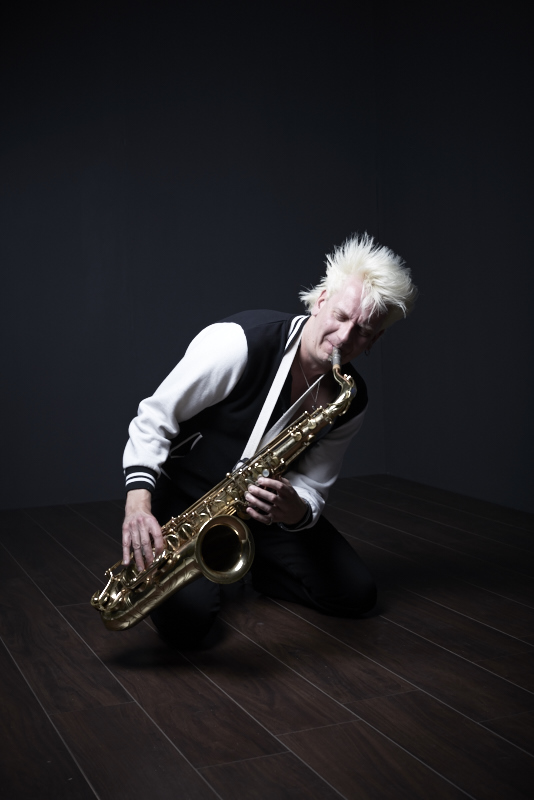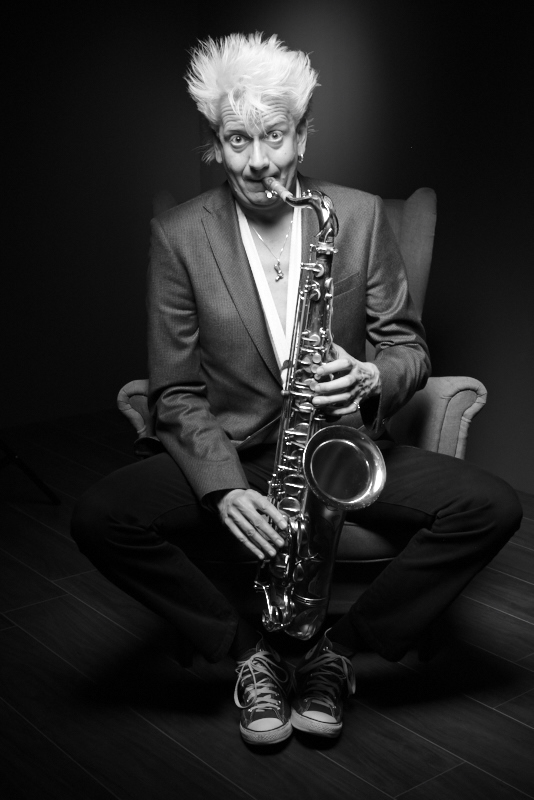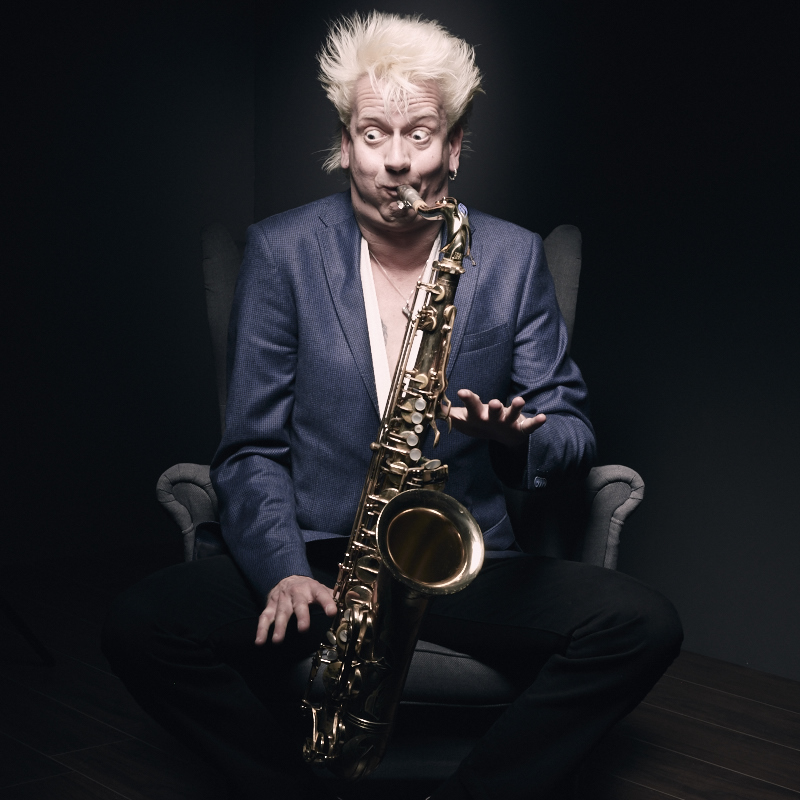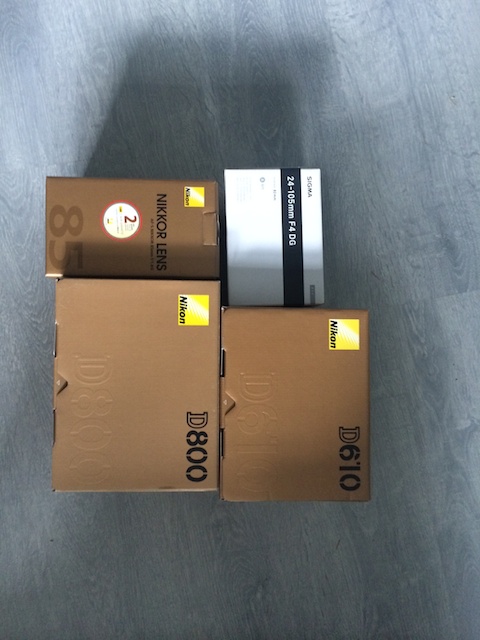Guess the light!
In aanloop voor het boek waar ik mee bezig ben dacht ik misschien leuk om deze even als post te plaatsen. De vraag is simpele: Hoe is deze foto belicht?
Laat je antwoord achter in een reactie hier onder aan de blog. Komende vrijdag zal ik de belichting uitleggen! Ben benieuwd naar jullie reacties!
Camera: Nikon D610, Sigma 24-105 art op 105mm, f8, 1/160, iso 100
Rythem & Jazz
Een paar weken geleden had ik het idee om een shoot te doen met een tapdansers en een drummer. Daarom had ik Marieke van de Ven en Maarten Kruijswijk gevraagd of zij het leuk zouden vinden om hier aan mee te werken.
Voor de locatie had ik de NDSM-werf in Amsterdam in gedachten. Dit omdat het een geweldige plek is met veel verschillende achtergronden en mogelijk heden. Tevens kan je hier ook goed met de auto komen en rustig/veilig werken.
Qua belichting heb ik gebruik gemaakt van de zon im combinatie met de Elinchrom Quadra RX en een grote Soft light reflector (beauty dish) met een zilveren deflector. Voor camera de D800 en D610 met de Sigma 24-105 f4 Art en de Sigma 50mm 1.4 Art lenzen.
Na de hoofdfoto was er ook nog tijd om extra portretten te maken
Workshop Jazz Portretfotografie
Hi All,
Vandaag heb ik de workshop Jazz Portretfotografie gegeven in het Jazz Museum in Rotterdam. Het was een leuke dag met leuke resultaten. Bedankt voor het model Jared Grant hij deed het geweldig!
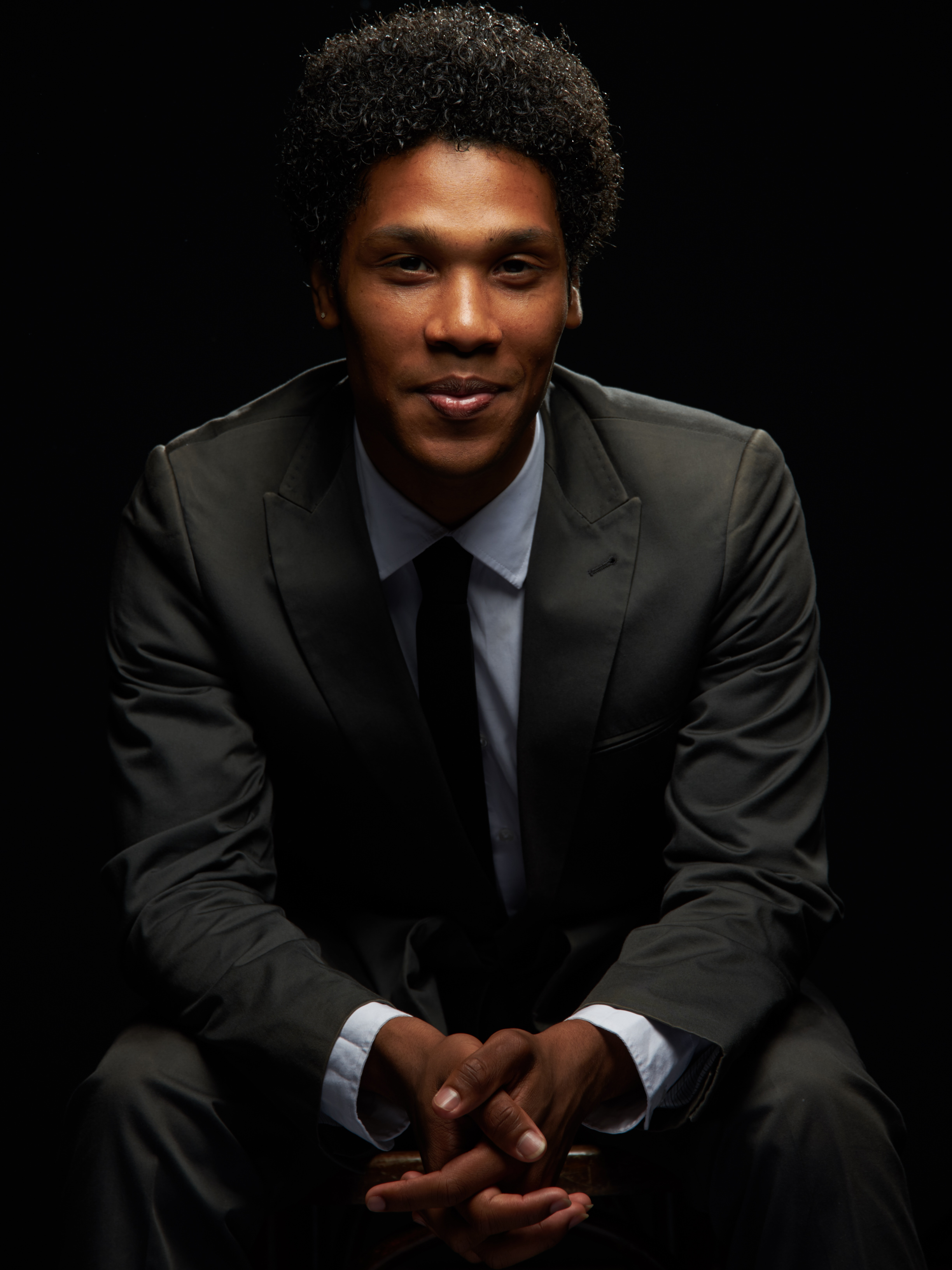
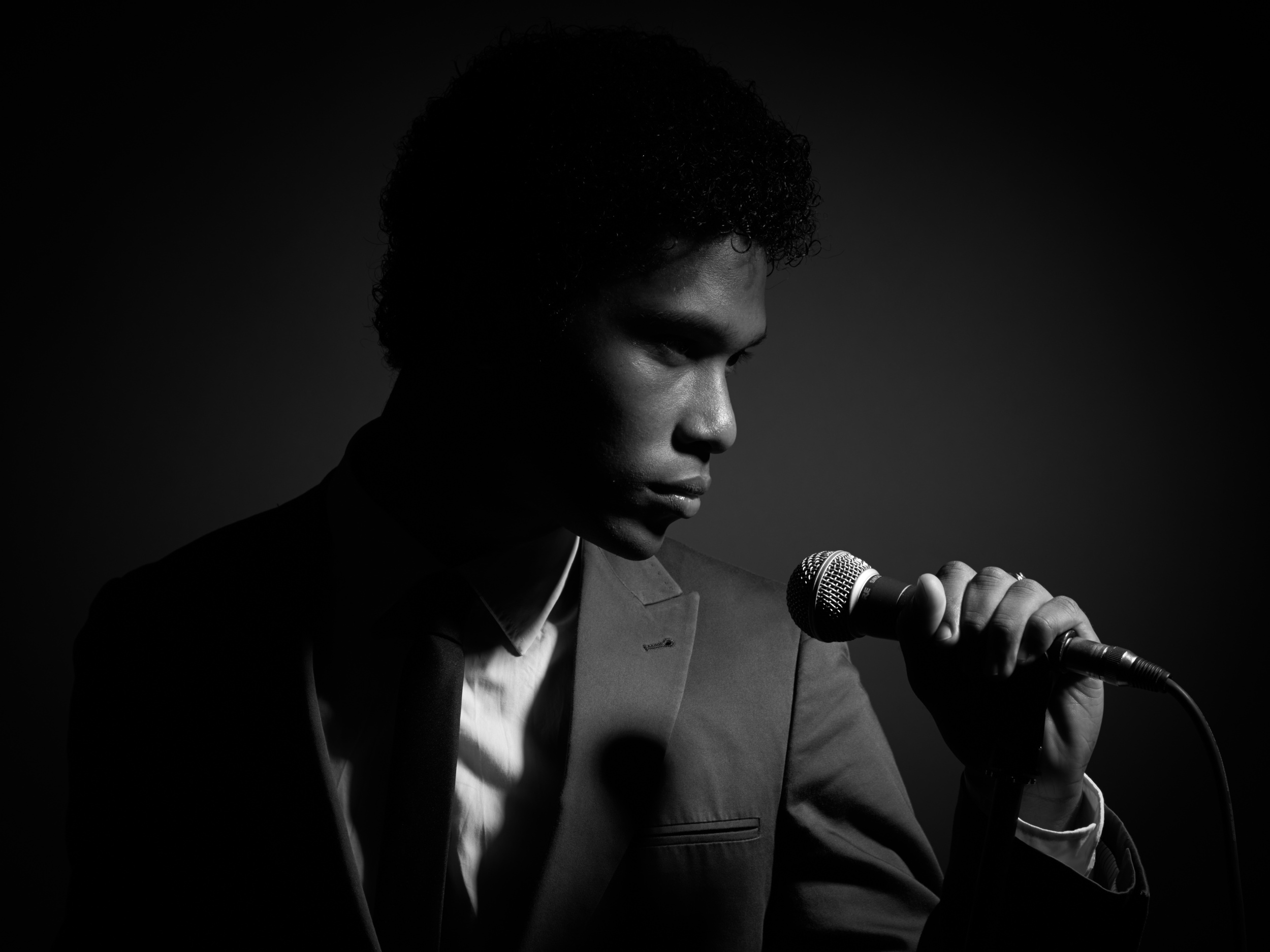
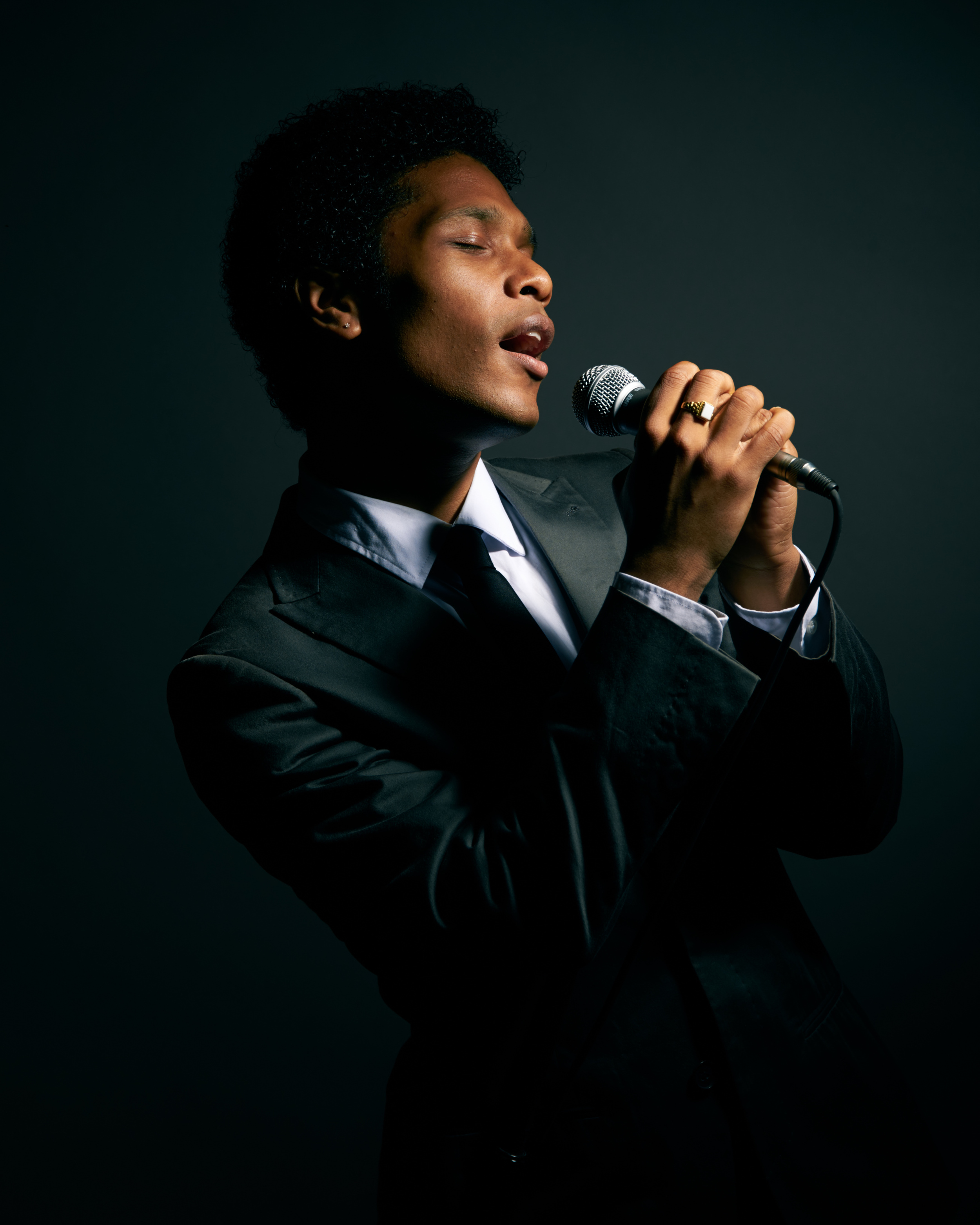
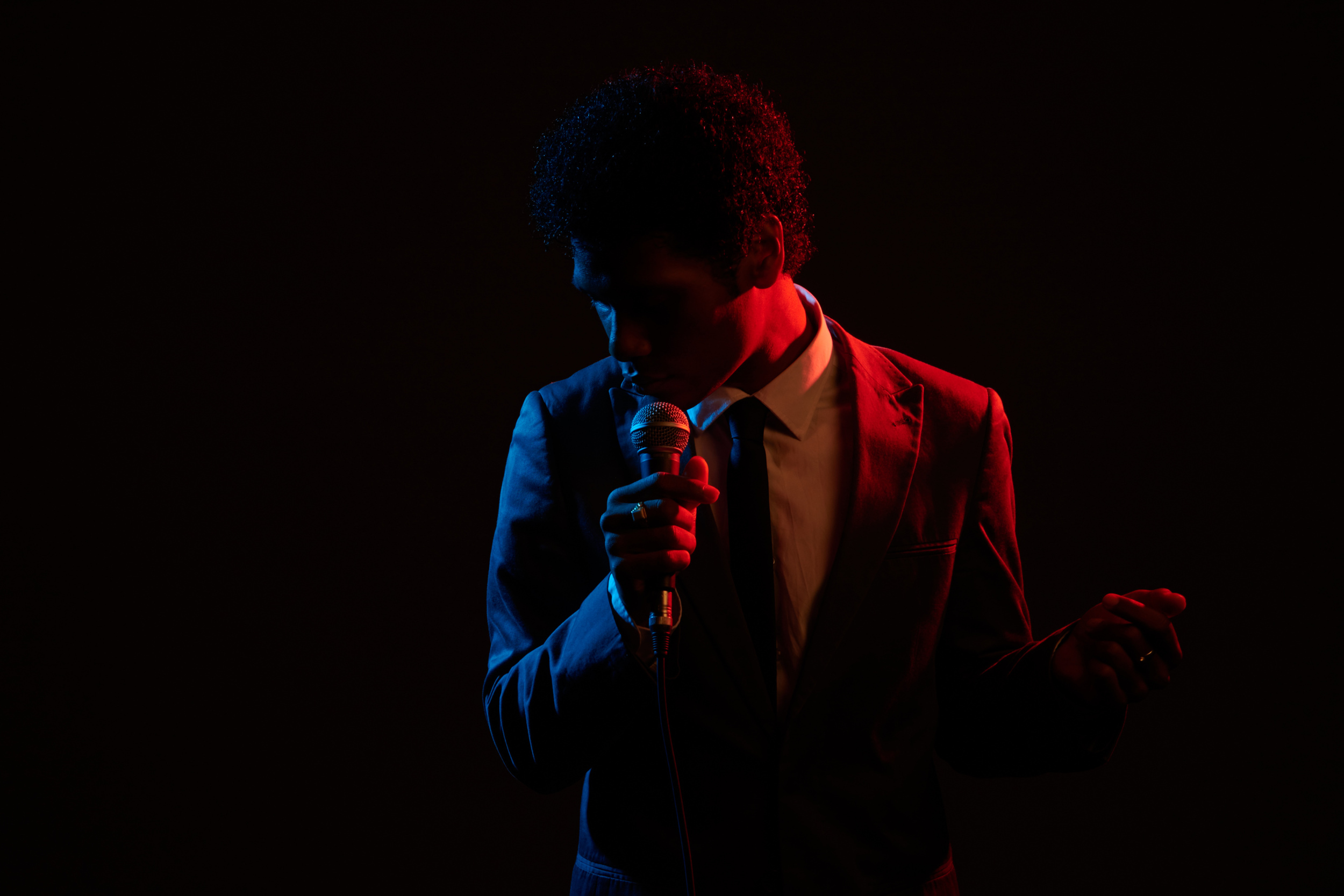

Belichting: Elinchrom RX one met plu of 18 cm reflector met 30 graden grid/gels en kleine softbox.
Introductie Elinchrom ELB
Vandaag ben ik bij de introductie workshop geweest van de nieuwe Elinchrom ELB en LiteMotiv softboxen.
De Elinchrom ELB 400
Vorig jaar heb ik mijn eerste Elinchrom Quadra set gekocht. Dit geeft mij de mogelijkheid om met studio kwaliteit ligt te werken waar ik ook maar ben. Maar Elinchrom had ook net de nieuwe ELC serie uit. En ergens wenste ik voor een combinatie van de twee, en die is er nu in de vorm van de ELB 400.
De Elinchrom ELB 400 bied alle functionaliteiten van de ELC, maar dan in een mobiel pakket met de mogelijk waar je ook maar wilt werken door de accu. Vandaag was de kans daar om de ELB 400 uit te proberen in combinatie met de nieuwe Elinchrom LiteMotiv softboxen.
Quadra vs. ELB 400
Het voordeel van de ELB 400 boven de gewone Elinchrom Quadra RX zijn er verschillende. Ten eerste de sneller herlaad tijd voor met maken van foto's. daarnaast heeft hij de mogelijkheden voor werken met strobo (snel achter elkaar flitsen), slow (vertraging in de flits als je werkt met langere sluitertijd en je heb geen 2e curtain sync) en sequence. Daarnaast heeft ook het uiterlijk een opknapbeurt gekregen. Het grote voordeel is dat het scherm vervangen is door een OLED display, dit maakt het werken in het menu een stuk makkelijker.
Resultaten
Hieronder staan een paar van de resultaten. Kleine disclaimer dit is niet mijn reguliere werk, de foto's zijn binnen en buiten de showroom genomen voor om de functies en werking te testen. Camera waren Nikon D610 met de Sigma 50mm 1.4 en 24-105 art lenzen en de Fuji X100


ELB, ELC of Quadra
Nu is natuurlijk de vraag welke moe je nemen? Dit is natuurljk per persoon verschillend.
- Wil je alle functies in een compacte set hebben neem de ELB 400 set.
- Wil je mobiele studiokwaliteit ligt hebben en niet veel waarde hecht aan de extra functies als strobo, neem de Quadra RX
- Wil je wel de speciale functie maar is mobiliteit geen vereiste neem dan de ELC's
Persoonlijk zit ik er aan te denken om voor de Elinchrom ELC 500 te gaan. De reden hiervoor is dat de speciale functies als strobo het beste werken in een studio omgeving zonder al te veel omgevingslicht. Voor op locatie heb k al de Quadra's. Daarnaast vind ik de snelle herlaad tijd an de ELC's echt geweldig! Met name op hogere vermogens zorgt dit dat je snel door kunt werken.
Eerste sessies in nieuwe studio
Zo de nieuwe studio is sinds vrijdag geopend! De foto's van de opening van de nieuwe fotostudio in Nieuw-Vennep volgen binnenkort! Maar nu eerst even wat nieuw werk.
Wouter Kiers
Wouter heb ik al regelmatig in mijn studio gefotografeerd, daarom had ik hem uitgenodigd voor een fotosessie in de nieuwe fotostudio. Voor de gene die Wouter niet kennen, hij is de Jimmy Hendrix van de Nederlandse saxofonisten, heeft met alle grote jongens in ons kleine landje samen gespeeld, is front man van Blood, Sweat en Kiers, en treed op met verschillende jazz, blues en r&b formaties, kortom te veel om hier even kort op te noemen!
Gear
Als camera heb k de Nikon D800 gebruikt met een Sigma 24-105 art lens. Qua belichting ws het de Elinchrom rotalux 150 deep octa sotbox meyt de BRX250 lamp aangevuld met een RX One met een reflector en grid op de achtergrond. Som afgewisseld met de beauty dish of Witte Soft light reflector (beauty dish) met grid. Alle foto's werden thetered geschoten naar Capture One Pro 8.1. Alle editing is ook in Capture One Pro 8.1.1 gedaan.
Why you don't need the most expensive fast Glass
Hi All,
There is something I wanted to share for a while, so here it is. I hear al lot of people always go, you need the most expensive glass and the fasted apertures, Get the Canon 50mm 1.2L for the smallest depth of field and so on. But there is a catch especially with portrait work. And that is what I am going to talk about.
I have for my Nikon kit one lens I do almost everything with. This is the Sigma 24-105 f4! Yes f-FOUR!!! Not 2.8. So most people say, they are bad for creating a Small Depth of Field. But they always forget there is always focal length and distance to subject in the equation. I made a small table:
Nikon D800/Sigma 24-105 Art @! 105mm 5.6
To make it a fair comparison I calculated everything with a 3 meter (30 feet) distance, with the most common used focal lengths. What you now can see is that with the Sigma 24-105 I can have a smaller Depth of Field at F4 than you can get with the 2.5x more expensive Canon 50mm 1.2L lens at 1.2.
This gives me also some extra advantages. I want to control my light, using strobes at 1.2 apertures is not really easy because a lot of studio strobes don't get that low and to kill the ambient light you have to start using ND filters. Also the compression for portraits at 105mm is beautifull. 50mm lenses are great for environmental portraits. But headshots are not flattering with 50m lenses. For people shooting portraits also take a look at an 85mm 1.8, you can get even smaller DOF with that than the 1.2
But whatever you do, never forget, a small DOF can be beautiful, but hell to focus. When people move maybe an inch it can make or break your shot. So a lot of time you even won't be shooting at maximum aperture, but more at f8 or f11. So you don't even need to buy the most expensive lenses to get great portraits.
Fuji !00 @ f2 with 1/1000
With Cropsensor camera's
The table above is calculated on 35mm/Full Frame camera's. Nowadays there are also a lot of great (mirrorless) crop sensor camera's like the Fuji's. The Fuji 56 1.2 is a killer portrait lens! And for the table, on 1.2 at 56mm you can get a 0,14 DOF! So don't come with the story you can't get a small DOF with a Crop Sensor camera!
With Medium Format
Or take a look at an old Hasselblad like the 500c/m with a 80mm 2.8. These baby's may be analogue, but still rock! I currently use to and love shooting with them and the quality and look is so great! For the table, at 2.8, 80mm you get an 0.38 DOF, so also small. And I can tell you, you will shoot the camera at f8 or f11 almost every time, because getting focus at f5.6 or lower is a challenge!
And with some nice film like Tri-X or Fuji Velvia, Scan them big (you can scan then up to 60mp eqv) and print them.
So I hope this helps you not to feel bad at not having the most expensive fast glass. You can do it with less. And yes the expensive lenses will be sharper and faster and all that. But it is still the photographer who seek the light, creates the composition and takes the pictures!
WHAT'S IN THE CAMERA BAG PART 2 THE NIKON BAG
This week part 2 in the series "What's in the bag", the Think Tank Airpot Airstream Nikon Bag! For the people who mist the last one about the Fuji Kit. You can read it here: WHAT'S IN THE CAMERA BAG PART 1: THE FUJI KIT.
This is my big production Nikon kit. Which I take with me on bigger productions and studio jobs. I must say I really like my Fuji's, but with no thetering options, only 16 megapixels and the writing speed, I still prefer my DSLR Nikon kit on bigger jobs!
The Think Tank Airport Airstream Bag
Did I all ready said I love Think Tank bags? Well, I do. They are great. In small packages they offer great space. You can easily adjust the lay-out to your needs with nice extra pockets on the outside and offer great protection for you gear. Beside the option to lock your zippers there is also a security cord in it so you can lock it to something else like a desk.
So this is how I configured mine:
My Nikon Gear
As told before I keep all my Nikon gear in it:
- Nikon D800
- Nikon D610
- Nikon 85 1.8G
- Nikon 50 1.8G
- Nikon SB-700
- Sigma 24-105 f4 Art
- Sigma 70-200 2.8
- Hohnle Grid
- Color checker
- Gossen Digisky Lightmeter
In the other pockets are other thing like:
- Business cards
- 8 Sanyo Enelope AA rechargeable batteries
- Extra Batteries for the camera's
- Connection cords
- Cleaning cloth
- Thetering cable
So this is my Nikon Big production kit. Next time I will take you through my Analog bag and my small production Nikon kit.
I switched from Canon to Nikon
After a long of wanting to switch I finally switched. I had Canon but was unhappy with canon as a company and especially their arrogance.
D800 vs D4 vs D4
Last year I had the opportunity to work with the D800, D4 and D600 from Nikon for my Dutch Jazz Portraits Project. I love the High res of the D800 but the file size of the camera was huge. The D4 is a speed monster, but it didn't felt the camera I would love to work with. It is great for journalists,but not for me ad a commercial music and dance portrait photographer. The D600 was also a really sweat camera. But I missed he resolution of the D800 sometimes.
The Decision
So now almost a year later I was still doubting adding D610 or D800, and I couldn't choose. So I took the next solution, I took the D800 with the Sigma 24-105 f4 lens and traded in all my Canon gear for the D610 and the Nikon 85 1.8 (a lens I really love for portrait work).
Upcoming weeks I am planning some shoots to test the camera's out and post some new work with them.
Fuji's
Some off you might think now, what about you Fuji's. Well I still keep them and love them, especially for traveling work. Because the Nikons great, but heavy! In two week sI will go to Paris for some new street work, and I will only take my Fuji's. Also the Fuji's are not good on video so I will use the Nikon for that. So the Nikons will for most be my studio and big shoot camera's and for when I have to more post work. The fuji will keep being my reportage/documentary camera's.





